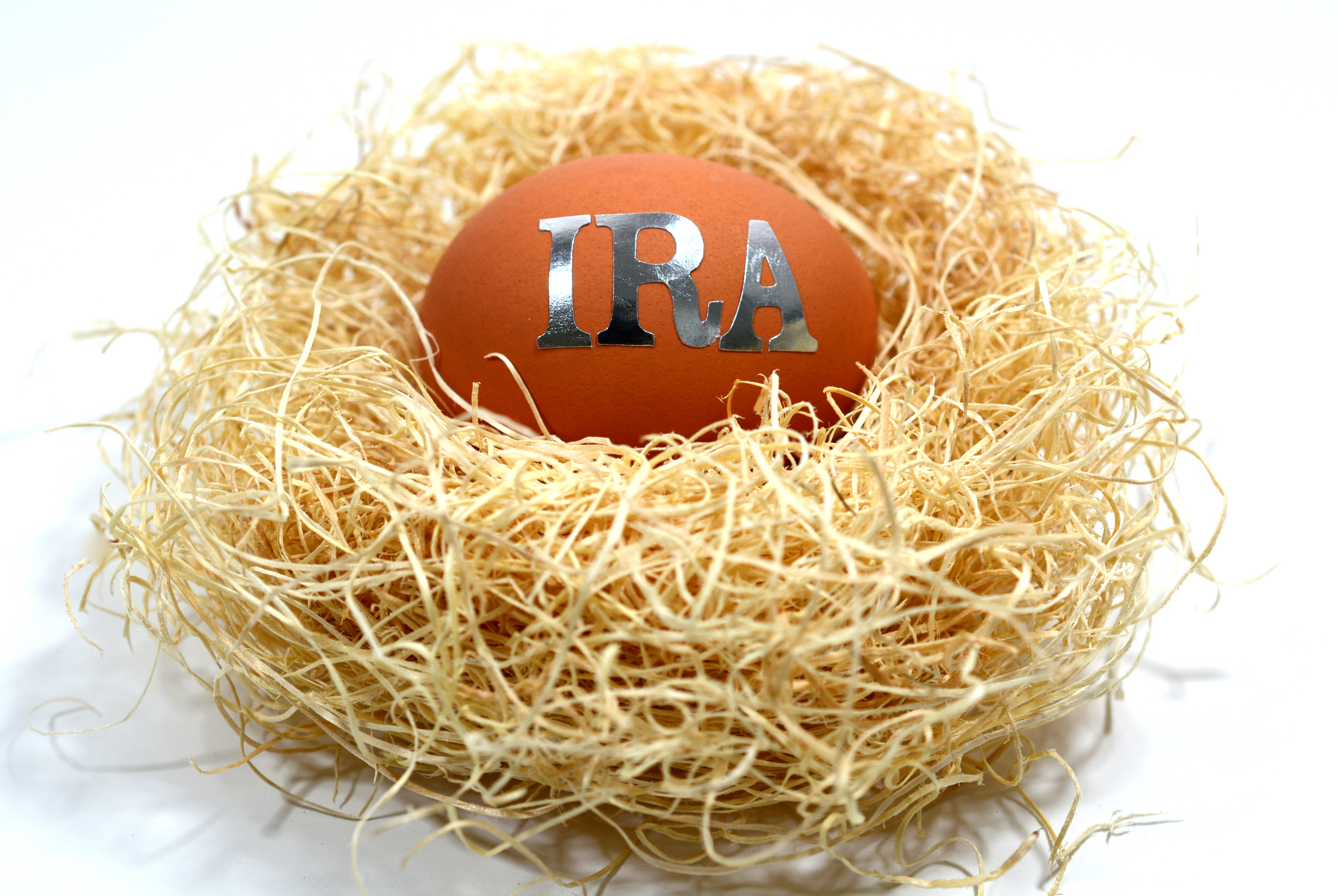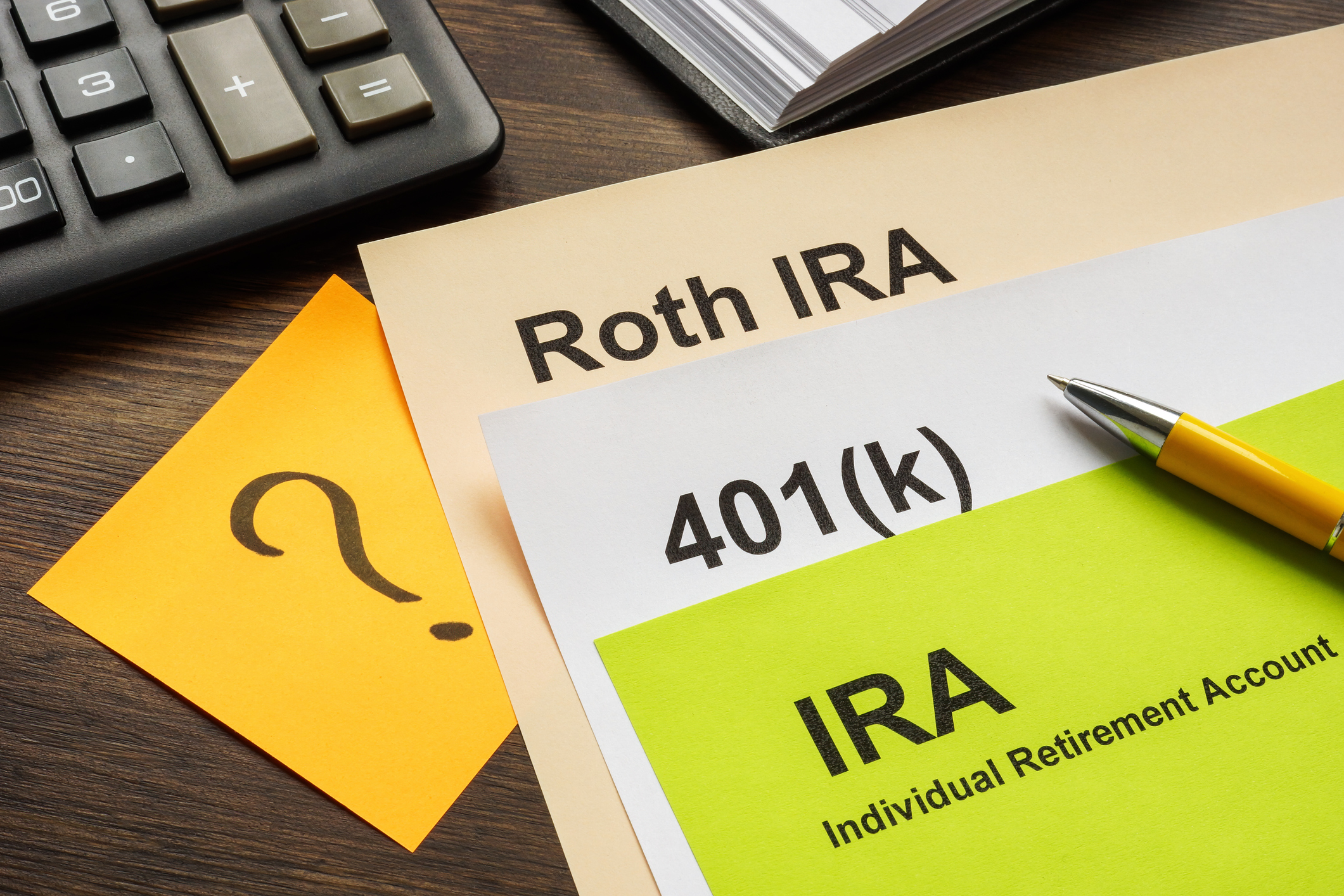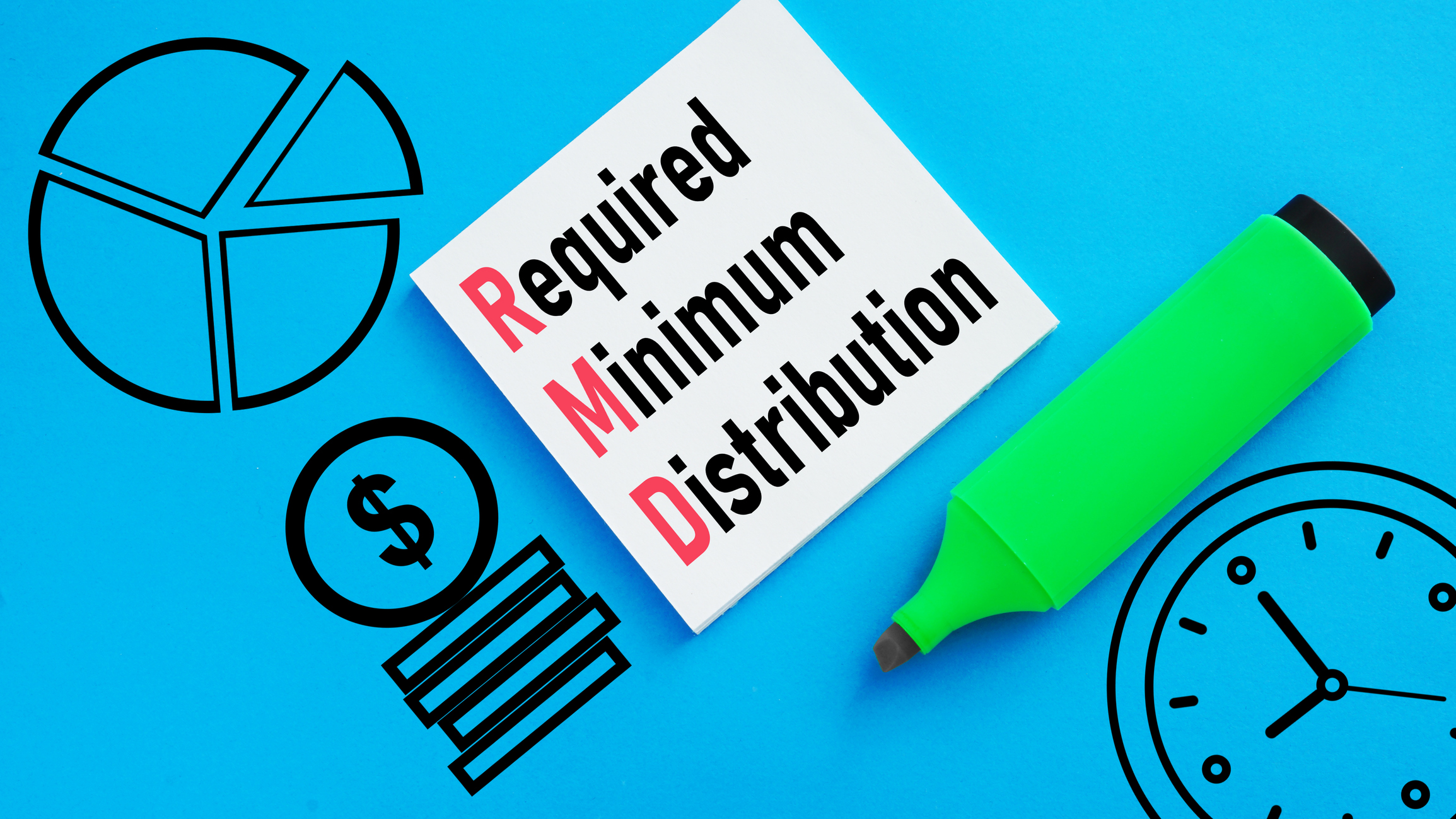Traditional IRA Basics: 10 Things to Know to Build Wealth
A traditional IRA can be a powerful retirement-savings tool, but you need to understand contribution limits, RMDs, rules for beneficiaries under the SECURE Act and more.

Donna LeValley

The traditional IRA is one of the best options in the retirement-savings toolbox. You can open a traditional IRA at a bank or a brokerage, and the universe of investments is wide open to you. But with that freedom comes responsibility.
Traditional IRAs have a lot of rules — break one and you could face a penalty. Follow those rules, however, and you can end up with a sizable chunk of change down the road.
To make the most of a traditional IRA, here are 10 things you must know.
From just $107.88 $24.99 for Kiplinger Personal Finance
Become a smarter, better informed investor. Subscribe from just $107.88 $24.99, plus get up to 4 Special Issues

Sign up for Kiplinger’s Free Newsletters
Profit and prosper with the best of expert advice on investing, taxes, retirement, personal finance and more - straight to your e-mail.
Profit and prosper with the best of expert advice - straight to your e-mail.
1. Saving tax-deferred can boost your nest egg

A traditional IRA can be a great way to turbocharge your nest egg by staving off taxes while you're building your savings. You get a tax break now when you put in deductible contributions. In the future, when you take money out of the IRA, you pay taxes at your ordinary income rate.
That means you can end up with hundreds of thousands of dollars more by maxing out contributions to an IRA each year compared with putting the funds in a regular savings account.
2. IRA contribution limits
There is an annual limit on how much you can contribute to an IRA. For 2025, the cap is $7,000 for an individual. People 50 and older by the end of the year can stash away an extra $1,000.
For 2026, you can contribute $7,500 (a $500 bump from 2025). If you're 50 and older, you can put away an extra $1,100 (up $100 from 2025), bringing your total contribution to $8,600 for 2026 (up from a total contribution of $8,000 in 2025).
If you also invest in a Roth IRA — the traditional IRA's tax-free sister, in which you stash after-tax money in exchange for future tax-free withdrawals — the total amount of money you can contribute to both accounts can’t exceed the annual limit. So if a 40-year-old puts $4,000 into a Roth IRA, he can only stash $3,000 in a traditional IRA. If you put in more than the annual limit, you may have to pay a 6% excessive-contribution penalty to the IRS.
Your earned income for the year, though, must cover the IRA contribution. For example, if you earn $4,000 for the year, that's the maximum you can contribute to an IRA.
A tip for parents and grandparents: There is no minimum age for contributing to an IRA. If your child or grandchild earns $2,000 from a summer job, for example, she can put that money into an IRA. Or you can put it in for her. As long as she has earned enough money to cover the contribution, you can provide the actual amount deposited into the account.
Self-employed people and small-business owners, take note: You can open a SEP IRA, which allows you to contribute up to 25% of your income with maximum tax-deferred savings of $70,000 in 2025 or $72,000 in 2026.
3. Nonworking spouses get their own IRAs

While generally you must have earned income to be able to contribute to a traditional IRA, there is an exception for nonworking spouses. In this case, a working spouse can fund a "spousal IRA'' for the nonworking spouse.
Say the wife works outside the home, while the husband is at home taking care of the kids. As long as she earns enough income during the year to cover both contributions, she can max out separate IRAs for both herself and her spouse for a total of up to $14,000 in 2025 (or $16,000 if one or both are age 50 or older, thanks to the $1,000 catch-up per person), and up to $15,000 in 2026 (or $17,200 if one or both are age 50 or older, thanks to the increased $1,100 catch-up per person).
4. The IRA contribution deadline falls in April
Many tax deadlines fall at the end of the calendar year. But there is an exception for IRAs. You can contribute up to the annual limit by the income tax return filing deadline (not including extensions) and still have the contribution count for the previous year. For example, if you didn’t contribute to your IRA in 2025, you can still stash up to $7,000 ($8,000 if you’re 50 or older) for 2025 in a traditional or Roth IRA until April 15, 2026 (or the next business day if it falls on a weekend/holiday).
In 2026, the 2025 amount jumps to $7,500 ($8,600 if you’re 50 or older), and you’ll have until roughly mid-April 2027 to make those 2026 contributions. And if you want, you can contribute money for the current year to your IRA at the same time and ramp up the compounding effects of depositing your contributions as early as possible.
5. You can have both an IRA and a 401(k)

What if you have a 401(k) at work? You can max out the contributions to your workplace plan and to an IRA.
However, the tax deduction for traditional IRA contributions is phased out for single filers covered by a workplace retirement plan who have modified adjusted gross income between $81,000 and $91,000 in 2025 (and $83,000 to $93,000 in 2026). For married couples filing jointly, in which the spouse who makes the IRA contribution is covered by a workplace retirement plan, the income phase-out range is $126,000 to $146,000 in 2025 and rises to $129,000 to $149,000 in 2026.
For an IRA saver who is not covered by a workplace retirement plan and is married to someone who is covered, the deduction is phased out if the couple’s income is between $236,000 and $246,000 in 2025 or $242,000 and $252,000 in 2026.
6. You can make nondeductible contributions to an IRA
If you don't qualify to deduct your IRA contributions, you can still stash money up to the annual limit in a traditional IRA. But be aware that making nondeductible contributions to an IRA will complicate your life when it comes time to withdraw funds from your IRA.
You can't just withdraw the after-tax contributions separately as tax-free distributions. Instead, each withdrawal from a traditional IRA will be a combination of your nondeductible contributions, your tax-deductible contributions and all their earnings. For example, say you want to withdraw $10,000 from a $300,000 IRA that holds $30,000 in nondeductible contributions. Because those nondeductible contributions make up 10% of your total IRA balance, 10% of your $10,000 withdrawal, or $1,000, will be tax-free.
Because that ratio can change, you have to refigure the pro- rata calculation each time you make a withdrawal. A better idea for retirement savers: If your income is too high to make tax-deductible contributions to a traditional IRA, but not high enough to block contributions to a Roth IRA, fund the Roth. All Roth IRA withdrawals in retirement will be tax-free.
7. Beware tax danger when transferring money into an IRA

When you change jobs or retire, you can choose to roll your 401(k) into a traditional IRA. But be careful: If the company cuts a check payable to you, 20% of the funds will be withheld for taxes.
The best route is a direct rollover from the 401(k) custodian to the IRA custodian. That way, the money never reaches your hands, and there's no risk of triggering an accidental tax bill.
So if you use an indirect 401(k) rollover, be super careful with this step. With an indirect 401(k) rollover you take on the burden of passing the money along. Your old account administrator will write a check to you, and then you’ll deposit that money in your bank account so you can write a check to your new account administrator. If you deposit the money into a new retirement account before the 60-day deadline, you’ll get your 20% back at tax time.
If you are moving money from one IRA to another — say, to switch custodians or consolidate accounts — request a direct transfer from one trustee to the other.
8. You can make early withdrawals from an IRA
Although it's ideal not to touch IRA money until retirement, sometimes life gets in the way, and you may want to access the funds earlier. If you tap your IRA before you turn 59-½, you will have to pay a 10% early-withdrawal penalty, on top of the regular income tax bill.
However, there are exceptions to the IRA early-withdrawal penalties — including using the money to pay the costs of a first-home purchase or for unreimbursed medical expenses.
Kip tip: If you know you will need some of your IRA money to supplement your income before age 59-½, you can set up "substantially equal periodic payments" (SEPP) to avoid the penalty. Be certain you really will need the money. Once you start SEPP payments, you must take them for at least five years or until you turn 59-½, whichever is longer.
9. You must take required minimum distributions (RMDs) from your IRA

All good things must come to an end, and such is the case with the tax deferral of a traditional IRA. Eventually, you will be required to withdraw a minimum amount from the account each year, known as a required minimum distribution (RMD). However, the SECURE 2.0 Act will eventually raise the age for starting RMDs to 75 in 2033 after moving it to 73 as of 2023.
So, if you turned 73 in 2024, you should have taken your first RMD by April 1, 2025. If you turn 73 this year (2025), you should take your first RMD by April 1, 2026. Similarly, if you turn 73 in 2026, your first RMD will be due by April 1, 2027.
But delaying your first payment until April 1 of the year after you’ve reached the mandatory age means you will have to take your second RMD that same year. All subsequent RMDs must be taken by December 31.
Taking two RMDs in the same year can increase your taxable income, pushing you into a higher tax bracket. That means a larger portion of your Social Security income could be subject to taxes.
You could also end up paying more for Medicare Part B or Part D if taking two RMDs in a year increases your adjusted gross income and tax-exempt interest income over a certain threshold.
The amount you have to take out is determined by your IRA balance and your age. The older you are, the larger the percentage of the balance you'll have to take out. But just because you have to take a distribution doesn't mean you have to spend the money; you can conduct an in-kind transfer of investment shares to a taxable account if you don't want to cash them out.
10. The rules are changing for your IRA beneficiaries
When you open a traditional IRA, you can name both primary and contingent beneficiaries. Your IRA beneficiary designations will override any instructions in a will.
However, the rules for managing an IRA inheritance differ for spousal heirs and nonspousal heirs.
Spouses have a lot of leeway; they can remain a beneficiary of the IRA or take the account as their own. Spouses who take the IRA as their own don't have to take RMDs until they turn 73.
However, spouses who are younger than 59-½ and want to tap the account should consider remaining a beneficiary because the money won't be subject to the 10% early-withdrawal penalty.
The SECURE Act changed some of the rules for nonspousal heirs. The legislation essentially eliminated stretch IRAs, which allowed nonspousal beneficiaries to take required annual distributions based on their life expectancy, not the original owner’s. IRAs that were inherited prior to Dec. 31, 2019, can still take advantage of this strategy.
Nonspousal beneficiaries who inherited an IRA — either a traditional or Roth IRA — after that date must now withdraw the money from the account within a decade. There are a few exceptions to this. If the beneficiary is disabled, a minor child of the original owner or less than a decade younger than the original owner, then they can continue to stretch out the RMDs.
Related Content
Profit and prosper with the best of Kiplinger's advice on investing, taxes, retirement, personal finance and much more. Delivered daily. Enter your email in the box and click Sign Me Up.
Jackie Stewart is the senior retirement editor for Kiplinger.com and the senior editor for Kiplinger's Retirement Report.
- Donna LeValleyRetirement Writer
-
 How We Manage Our Finances Together: 'When You Keep Score, You Can End Up Resentful'
How We Manage Our Finances Together: 'When You Keep Score, You Can End Up Resentful'Douglas Boneparth, a certified financial planner, and his wife, Heather Boneparth, speak with Kiplinger about couples managing finances.
-
 I'm 45 and I've barely invested in the stock market. I recently inherited $50,000. What should I do?
I'm 45 and I've barely invested in the stock market. I recently inherited $50,000. What should I do?What should you do with a big inheritance? We asked a financial expert for advice.
-
 A Contrarian Approach Pays Off for This Bond Fund
A Contrarian Approach Pays Off for This Bond FundThe Dodge & Cox Income Fund has outperformed in 2025 thanks to its managers' fearless approach.
-
 7 Creative Ways to Spend Less and Save More In Retirement, Courtesy of a Financial Pro
7 Creative Ways to Spend Less and Save More In Retirement, Courtesy of a Financial ProWorried you won't have enough money later in life? Try redesigning your vision of retirement, and you may find your savings go further than you thought.
-
 I'm an Annuities Pro: This Is How You Can Cover the Income Gap While Your Social Security Benefits Grow
I'm an Annuities Pro: This Is How You Can Cover the Income Gap While Your Social Security Benefits GrowTaking Social Security later results in higher future income, but that can create an income gap. Annuities can boost income until you file for benefits.
-
 I'm a Financial Pro: You Really Can Make New Year's Money Resolutions That Stick (and Just Smile as Quitter's Day Goes By)
I'm a Financial Pro: You Really Can Make New Year's Money Resolutions That Stick (and Just Smile as Quitter's Day Goes By)The secret to keeping your New Year's financial resolutions? Just make your savings and retirement contributions 100% automatic.
-
 Domestic vs Offshore Asset Protection Trusts: A Basic Guide From an Attorney
Domestic vs Offshore Asset Protection Trusts: A Basic Guide From an AttorneyLearn the difference between domestic asset protection trusts and foreign or offshore asset protection trusts to help you decide what might work best for you.
-
 Now That You've Built Your Estate Planning Playbook, It's Time to Put It to Work
Now That You've Built Your Estate Planning Playbook, It's Time to Put It to WorkYou need to share details with your family (including passwords and document locations) and stay focused on keeping your plan up to date.
-
 I'm a Wealth Adviser: These 10 Strategies Can Help Women Prepare for Their Impending Financial Power
I'm a Wealth Adviser: These 10 Strategies Can Help Women Prepare for Their Impending Financial PowerAs women gain wealth and influence, being proactive about financial planning is essential to address longevity and close gaps in confidence and caregiving.
-
 I'm a Financial Planning Pro: This Is How You Can Stop These 5 Risks From Wrecking Your Retirement
I'm a Financial Planning Pro: This Is How You Can Stop These 5 Risks From Wrecking Your RetirementYour retirement could be jeopardized if you ignore the risks you'll face later in life. From inflation to market volatility, here's what to prepare for.
-
 Are You Hesitating to Spend Money You've Spent Years Saving? Here's How to Get Over It, From a Financial Adviser
Are You Hesitating to Spend Money You've Spent Years Saving? Here's How to Get Over It, From a Financial AdviserEven when your financial plan says you're ready for a big move, it's normal to hesitate — but haven't you earned the right to trust your plan (and yourself)?